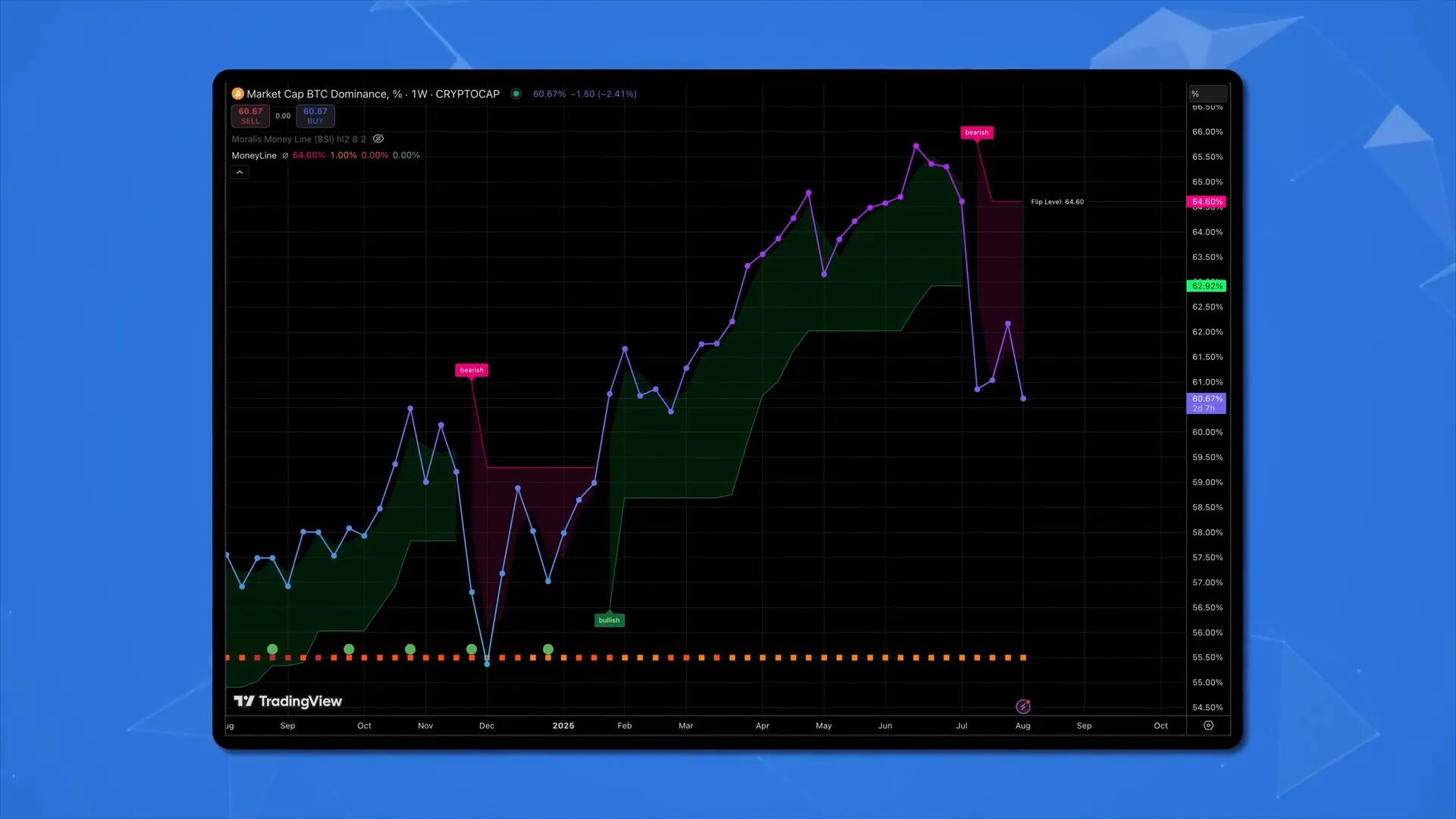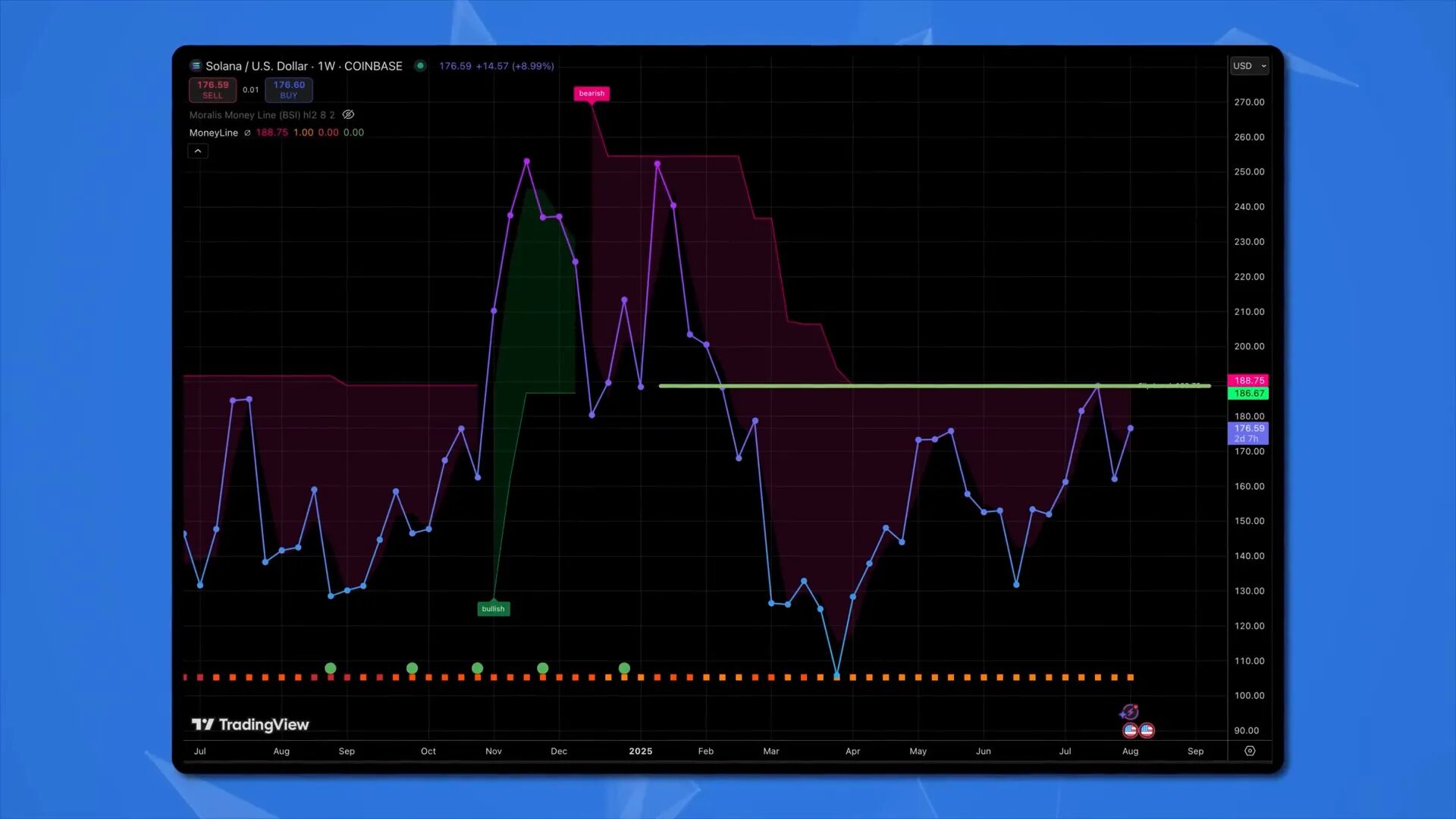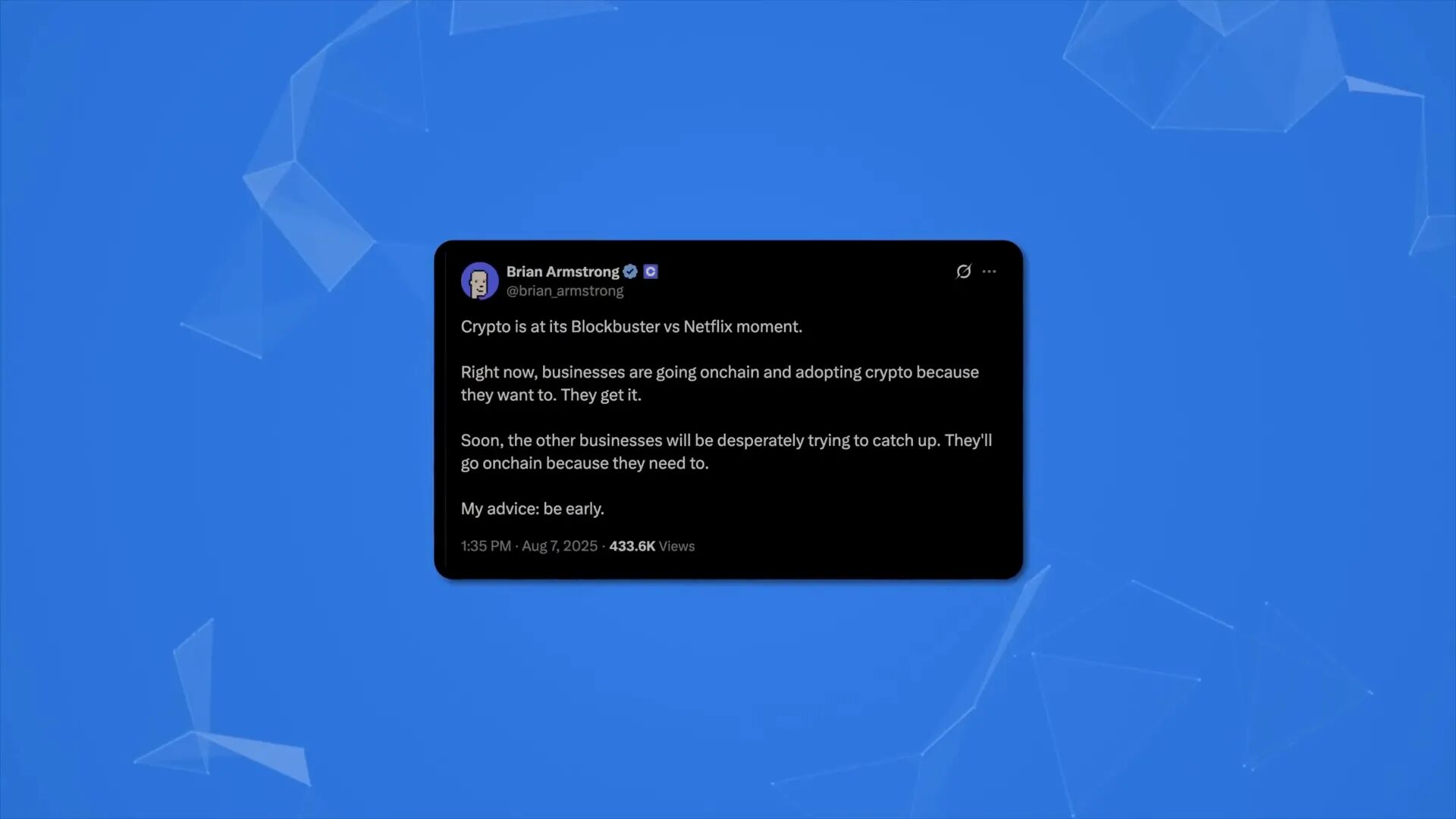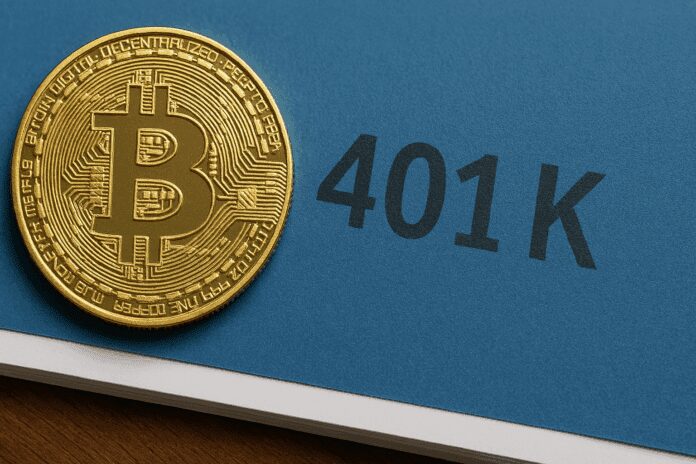Today I want to walk you through a single seismic change that just happened: the legal pathway for Bitcoin in 401 K accounts. This move isn’t a small policy tweak — it’s a full-blown retirement revolution. In this article I’ll explain exactly what changed, why the numbers are so bullish, how this could impact Bitcoin’s price trajectory (yes, I’ll explain the case for Bitcoin to $1M), what it means for altcoin season, which blockchains to watch, and a practical game plan for securing and managing crypto inside retirement accounts and outside them. If you’ve been on the sidelines, consider this your wake-up call: Bitcoin in 401 K is no longer hypothetical — it’s real, and it changes everything.
Table of Contents
- Why ‘Bitcoin in 401 K’ Matters — The Big Picture
- How the Rule Change Happened
- Bitcoin vs. Traditional Hard Assets: Why Bitcoin in 401 K Makes Sense
- Path to $1,000,000: How Bitcoin in 401 K Could Push Prices Higher
- Altcoin Season: Why Bitcoin in 401 K Could Trigger a Broader Boom
- Internet Capital Markets and Tokenization — What Comes Next
- Custody and Security: What to Do If You Care About Long-Term Crypto Exposure
- Action Plan: How to Prepare for Bitcoin in 401 K
- Risks, Realities, and Responsible Investing
- Frequently Asked Questions (FAQ)
- Closing Thoughts: A New Chapter for Retirement and Crypto
Why ‘Bitcoin in 401 K’ Matters — The Big Picture
For the first fifteen years of Bitcoin’s life, mainstream finance largely ignored or dismissed it. Top Wall Street voices called it risky, speculative, or worse. That era is ending. The move to allow Bitcoin in 401 K and similar retirement structures opens access to the single largest pool of investable private capital on Earth: retirement assets.
Let’s be clear: when I say Bitcoin in 401 K, I’m not talking about a niche product for tech-forward investors. I’m talking about the possibility of major retirement administrators — the Fidelitys, Schwabs, and others who manage trillions — offering Bitcoin as an option alongside index funds and blue-chip stocks. That changes the psychology of retirement investing and the flow of capital into crypto.
The Simple Math That Makes This Huge
Here’s why Bitcoin in 401 K is not just symbolically important but quantitatively massive. There’s about $8.7 trillion sitting in American 401(k) accounts and roughly $35 trillion in total retirement assets. That’s roughly $43 trillion of capital. If even 1% of that pool allocates to Bitcoin over the next decade, that’s $430 billion of new demand.
Compare that to Bitcoin’s current market capitalization. Bitcoin today holds roughly $2.3 trillion in market cap (and remember, that figure represents all of Bitcoin’s value at a snapshot in time). An incremental $430 billion of demand is a meaningful structural shift in the supply-demand equation. And that’s a conservative 1% scenario. Institutional recommendations from major players are already suggesting 1–5% allocations, which multiplies the potential impact.
How the Rule Change Happened
One signature from the executive branch removed legal barriers that had kept retirement accounts from investing in alternative assets like private equity, real estate, and — crucially — Bitcoin and cryptocurrencies. This effectively opened the floodgates for retirement plan administrators to add crypto exposure where they deem appropriate.
That means individual retirement accounts, annuities, private-sector benefit plans, state and local government benefit plans, and federal benefit plans all have the legal latitude to include crypto allocations. That’s not theoretical policy language anymore — it’s actionable market access.
Institutional Momentum — More Than Just a Policy Change
Policy unlocked the door, but institutional adoption has already been warming up. Over recent years, we watched Bitcoin ETF proposals rejected then approved, institutional managers begin recommending small allocations, and now retirement access becomes another stamp of legitimacy. Combined, these developments create an environment where large, conservative pools of capital can transition from exclusion to inclusion.
Bitcoin vs. Traditional Hard Assets: Why Bitcoin in 401 K Makes Sense
People allocate to hard assets for protection against inflation, currency debasement, and sovereign risk. Traditionally, gold has been the go-to. Yet the defining characteristic of Bitcoin is scarcity plus digital portability plus network effects. While gold preserves value, Bitcoin has potential to preserve and multiply value over time because of its fixed supply and increasing demand dynamics.
When you think about the alternatives in retirement portfolios — government bonds, corporate debt, and equities — you’re often looking at exposure to leverage, debt issuance, and companies under pressure in a high-debt global economy. In a world of persistent monetary expansion and structural budget deficits, bonds and cash are less attractive. Bitcoin offers a complementary hedge.
Supply Constraints Amplify Impact
The limited supply of Bitcoin means that large inflows have outsized price effects. When flows from retirement accounts, pensions, and institutional allocations enter a market where supply is finite and on-chain liquidity can be constrained, price sensitivity becomes acute. The recent trend of BTC flowing off exchanges into cold storage is confirmation that long-term holders are staking their claims.
Path to $1,000,000: How Bitcoin in 401 K Could Push Prices Higher
Is $1M per Bitcoin realistic? Use the following mental model. The entire gold market is about $23 trillion. Bitcoin at $1M would represent a vastly increased allocation relative to today’s market cap. But the math many are quoting is straightforward: if U.S. pensions allocate a few percent to Bitcoin — a three percent allocation cited in some analyses — that capital alone could meaningfully propel BTC price toward the $1M range, given current market cap and supply dynamics.
Remember: price is a function of money in (demand) versus supply available for sale. Add in global adoption, corporate treasuries, ETF inflows, and retirement demand, and the path to $1M becomes less fantastical and more plausible than it would have been just a few years ago.
Other Tailwinds to Consider
- Interest rate cuts: When central banks eventually ease policy, more capital rotates into risk assets.
- Institutional product maturity: Market infrastructure, custody, and regulatory clarity reduce friction for big investors.
- Global demand: This analysis is U.S.-centric. Add in non-U.S. pension flows and private capital and the potential is even larger.
Altcoin Season: Why Bitcoin in 401 K Could Trigger a Broader Boom
Bitcoin dominance — the percentage of total crypto market cap that BTC represents — tends to fall during altcoin bull markets. Right now dominance sits around 60% in this narrative. If Bitcoin absorbs massive retirement inflows and then stabilizes above key resistance levels, capital historically trickles into altcoins as traders and investors chase higher returns.
When dominance drops into the 30–40% range, many altcoins have historically exploded. The sequence usually follows: Bitcoin leads the macro surge, institutional and retail capital flows in, BTC dominance peaks then recedes, and altcoins rally. That’s why the phrase Bitcoin in 401 K matters beyond BTC — it catalyzes broader crypto market rotation.

Which Sectors and Chains to Watch
Early in a rotation, large-cap altcoins typically benefit first — think Ethereum and layer-1 smart contract platforms. Ethereum recently reclaimed significant price levels and remains central to DeFi and tokenization narratives. Solana is another chain to watch: its on-chain activity and throughput make it attractive for Internet-scale capital markets applications.
Solana’s valuation relative to its activity looks compelling to many observers. From a network usage standpoint, Solana supports high-throughput decentralized exchanges, tokenized pre-IPO markets, and real-time trading capabilities that traditional markets can’t match. If institutional players view Solana as undervalued, capital could push it into a new bullish trend.

Internet Capital Markets and Tokenization — What Comes Next
Everything is getting tokenized: bonds, stocks, private equity, real estate. Tokenization allows fractional ownership, 24/7 trading, and global access. We are already seeing early examples of internet capital markets where pre-IPO shares of private companies are tokenized and traded on-chain. These innovations lower barriers to access, democratize private markets, and create new liquidity pathways.
This is a fundamental structural shift. If retirement accounts begin using tokenized instruments and crypto allocations, the investment universe becomes much more fluid and connected. That’s a major reason I stress the Bitcoin in 401 K theme: it’s not just about Bitcoin as an asset; it’s about a broader on-chain financial infrastructure becoming part of mainstream retirement planning.

Pre-IPO Token Markets — A New Frontier
Decentralized exchanges and liquidity pools on scalable chains can already support tokenized pre-IPO equities. That means retail and institutional investors can trade tokenized slices of companies that haven’t listed on traditional markets. Accessibility, low minimums, and 24/7 trading challenge the old gatekeeping model. When retirement accounts and wealth managers start integrating these products, investor choice expands dramatically.
Custody and Security: What to Do If You Care About Long-Term Crypto Exposure
With Bitcoin in 401 K becoming possible, custody infrastructure becomes an essential consideration. Long-term holders should understand that holding Bitcoin inside a retirement structure is one path, but self-custody remains a best practice for securing long-term crypto exposure outside managed accounts.
Why? Because exchanges and custodial solutions can fail or face legal risk. If you’re planning to hold crypto for decades, transferring your long-term positions to cold storage reduces counterparty risk. The market is already seeing BTC flow off exchanges — a sign that many investors intend to HODL for the long term.
Practical Steps for Secure Long-Term Storage
- Choose a reputable hardware wallet or other secure cold-storage option.
- Follow best practices: write down seed phrases offline, use multiple backups, and never share private keys.
- For retirement allocations: understand the custody setup used by plan providers and ensure robust institutional custody and insurance where possible.
- Keep liquidity needs separate from long-term holdings. Use a combination of custody, dollar-cost averaging, and planned rebalancing.
Action Plan: How to Prepare for Bitcoin in 401 K
Here’s a practical playbook to prepare for this new era.
- Educate Yourself: Understand what it means to have Bitcoin in 401 K and how retirement providers integrate crypto products.
- Check Plan Offerings: When your plan provider announces crypto options, review fees, custody arrangements, and tax implications.
- Maintain Diversification: Consider small allocations consistent with your risk tolerance — institutional guidance often suggests 1–5% as a starter point for diversified portfolios.
- Plan for Taxes: Retirement accounts have tax advantages. Compare Roth, traditional, and other accounts when deciding how to allocate to crypto.
- Self-Custody for Long-Term Positions: If you want maximal control over long-term holdings, plan to transfer to cold storage outside of retirement accounts, understanding tradeoffs.
- Take Profits Strategically: Market cycles reward discipline. Make a plan for profit-taking and rebalance when appropriate.
Risks, Realities, and Responsible Investing
This is not investment advice. There are important risks to keep in mind. Crypto is volatile. Regulations can change. Custody solutions are maturing but not infallible. Retirement accounts adding Bitcoin will likely have guardrails and limited allocations for good reason. Don’t over-allocate beyond your risk tolerance and always consider how crypto fits into your broader financial plan.
That said, the macro environment — rising national debt, inflationary pressures, and centralized monetary expansion — makes a case for some hard-asset diversification. Bitcoin in 401 K provides an institutional channel for that diversification, not a guaranteed windfall.
Frequently Asked Questions (FAQ)
Q: What exactly does ‘Bitcoin in 401 K’ mean?
A: It means retirement plans, including 401(k)s and similar vehicles, can legally allocate funds to Bitcoin and other digital assets. That creates institutional pathways for retirement money to enter crypto markets.
Q: How much capital could potentially flow into Bitcoin from retirement accounts?
A: There’s about $43 trillion in U.S. retirement assets. Even a conservative 1% allocation equates to about $430 billion in demand over time. Larger allocations or global adoption would scale this figure upward substantially.
Q: Will allowing Bitcoin in 401 K guarantee price appreciation?
A: No guarantees. However, structurally increasing long-term demand from conservative retirement pools is a powerful bullish factor, especially given Bitcoin’s limited supply.
Q: Should I move all my retirement funds into Bitcoin?
A: No. Diversification is key. Many advisors suggest modest allocations for long-term portfolios based on risk tolerance, investment horizon, and overall financial goals.
Q: What about custody and security for Bitcoin held in retirement accounts?
A: Plan administrators will need to provide institutional-grade custody solutions. If you prefer direct control, you can hold crypto outside retirement accounts in your own cold storage, but be mindful of tax implications.
Q: How does this affect altcoins and other blockchains?
A: Bitcoin in 401 K can catalyze a broader bull market. As BTC stabilizes and dominance falls, capital historically flows into large-cap altcoins like Ethereum and scalable chains like Solana, and eventually into smaller projects during peak altcoin season.
Closing Thoughts: A New Chapter for Retirement and Crypto
Bitcoin in 401 K isn’t a headline — it’s a structural shift. It opens a new channel for capital that historically helped shape markets. If you’ve been an early adopter, you’re in a privileged position to benefit from this evolution. If you’re new, this is a prompt to learn, plan, and act responsibly.
We are at a pivotal moment: policy, product maturity, and institutional acceptance are converging. The next decade could reframe how entire generations save for retirement, and Bitcoin is at the center of that possibility. Prepare, secure your positions, diversify intelligently, and above all, make a plan and stick to it.
Stay safe and informed — be early, but be prudent. Bitcoin in 401 K is here, and it’s a game-changer.



